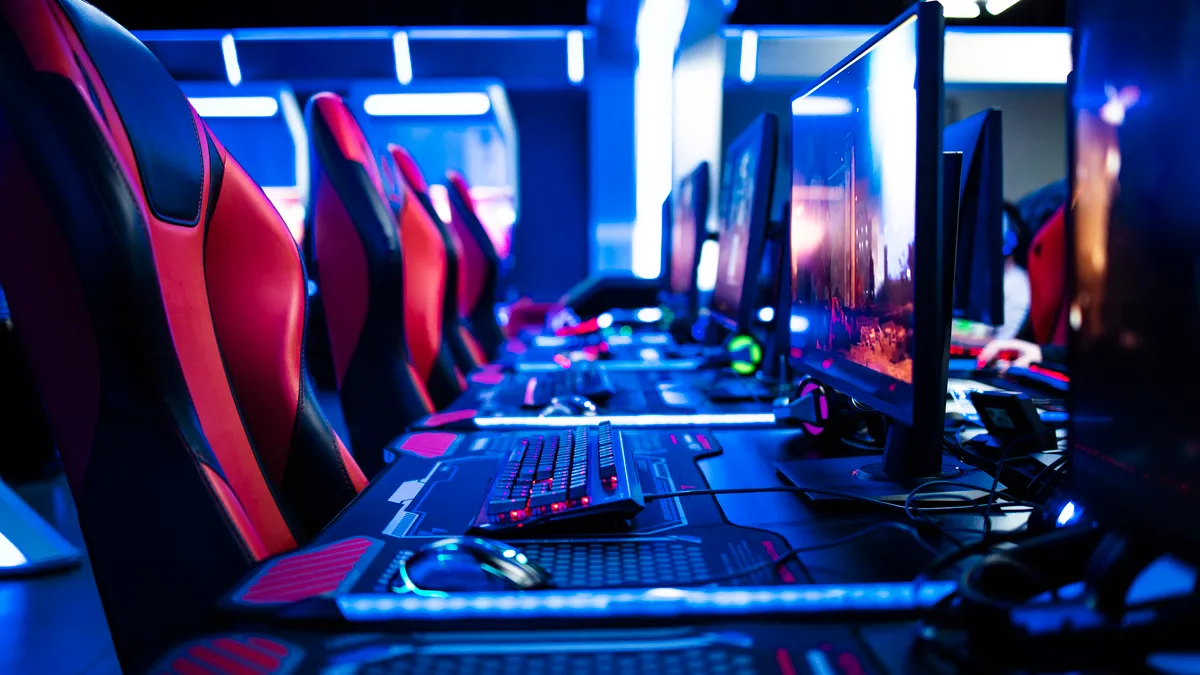Twitch, the streaming platform owned by Amazon, recently found itself in hot water after announcing that it plans to change the revenue share split for subscriptions from 70/30 to 50/50. As Twitch grows in popularity for both streamers and advertisers, the lasting effects of this change remains to be seen.
The vast majority of Twitch streamers are already on a 50/50 revenue share plan, meaning that revenue from subscriptions to a creators channel are split evenly between the creator and the company. However, certain streamers were offered a 70/30 split on subscriptions as their followings grew. At the end of September, Twitch said it is ending that arrangement, and streamers with these premium plans will earn 50/50 after they hit the $100,000 threshold on 70/30. The change takes effect June 1, 2023.
While this change is going to affect certain Twitch streamers, it shouldn’t directly impact advertisers on the platform, according to experts. If anything, streamers are going to have to run more ads to make up for the loss in revenue. But, this isn’t necessarily a good thing and could undermine some of Twitch’s value.
“They will have to run more advertisements or broadcast for longer hours to maintain the same income level. More frequent advertisements on the broadcast could worsen the viewing experience for their audience, increasing the churn rate,” said Luca Chiovato, a market analyst for the games market data company Newzoo in an email to Marketing Dive. “At the same time, longer broadcast hours would negatively impact the quality of life of the streamers.”
Burn out
Marketers should understand how this shift is going to impact how they work with top talent. In contracts with its top creators, Twitch asks for 200 streamed hours a month, per Chiovato. This schedule is more demanding than that of the usual full-time job. And a job in streaming doesn’t usually come with a paid vacation plan.
Streamers are becoming increasingly burnt out, according to a report by NPR. Long hours, minimal breaks in order to keep viewers entertained and boredom playing the same game day in and day out takes its toll. So while more frequent advertising may feel like a blessing to advertisers, it may not be for viewers and creators.
Twitch, which made an estimated $2.6 billion in revenue last year, has taken some steps to help mitigate this effect. For example, the streamer’s Ads Incentive Program was designed to help creators have a more predictable monthly income level. However, the reduction in creators’ revenue share put the platform, which prides itself on putting ‘creators first,’ in a tight spot. Many creators argue that a 50 percent share is not enough, and instead of everyone being on a 50/50 plan, everyone should be shifted to a 70/30 share split. An effort to raise the revenue share for creators on Twitch’s UserVoice platform, which was declined by the company, generated nearly 23,000 votes at the time of writing.
Despite this outcry, Twitch remains top dog when it comes to streaming, and that is unlikely to change. And as this deal affects subscription revenue, it will not likely affect the creator/advertiser relationship.
“The relationship with Twitch and creators is consistently evolving. But again, it’s the top platform for live stream content by a large margin and it still offers creators a great platform to share their content with their communities while also monetizing,” said Chris Mann, a senior vice president who leads the gaming and esports group REV/XP at rEvolution, a sports marketing company in an email to Marketing Dive.
There are some alternatives to Twitch, such as YouTube Gaming, according to Mann. Facebook also has a gaming service, but with nearly 3 billion hours of content consumed in 2020, Twitch reigns king when it comes to video game streaming. The true impact of this shift can only be evaluated in time.
“I don’t think there will be a massive shift in advertising dollars because of this change,” said Mann. “As long as Twitch continues to be the leader in live stream gaming content, they will continue to attract top tier brands to activate within their ecosystem.















